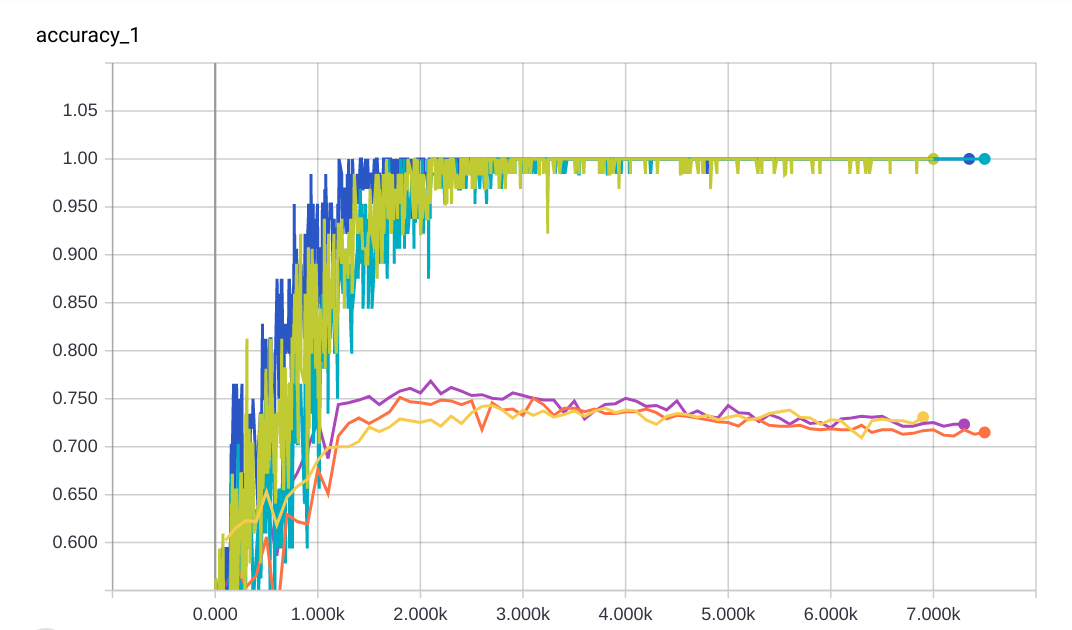I am looking at learning curves (CNN for text classification, which is based on this paper) and trying to play with regularization to prevent overfitting. This model uses L2 regularization and dropout.
What is interesting is that by looking at the accuracy graph I cannot really tell which model is the best. On the other hand the loss graph shows some differences. See pictures below.
Here are my question:
- should we always look at the loss curves to check for overfitting?
- the accuracy graph is not very precise because accuracy is discrete and a lot of information gets lost when we compute it?


